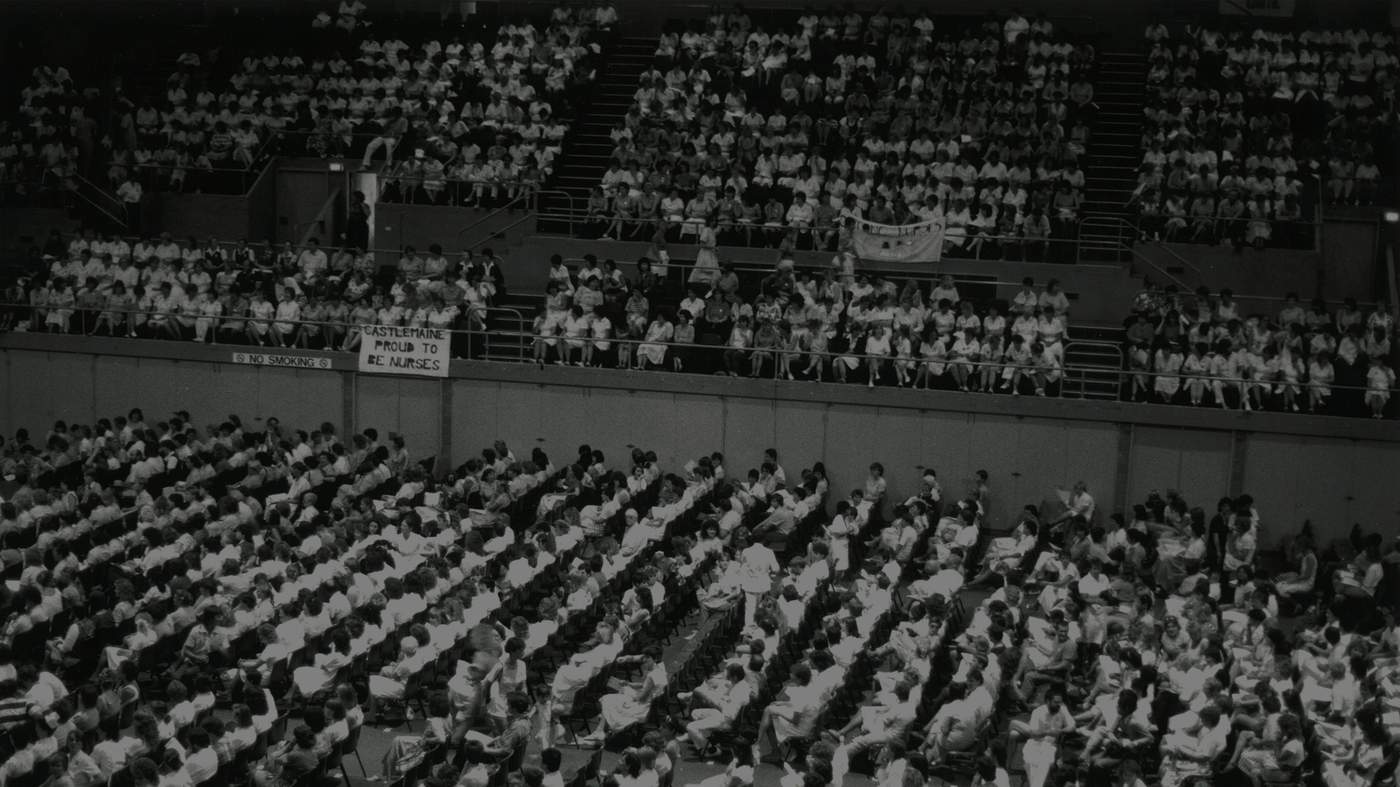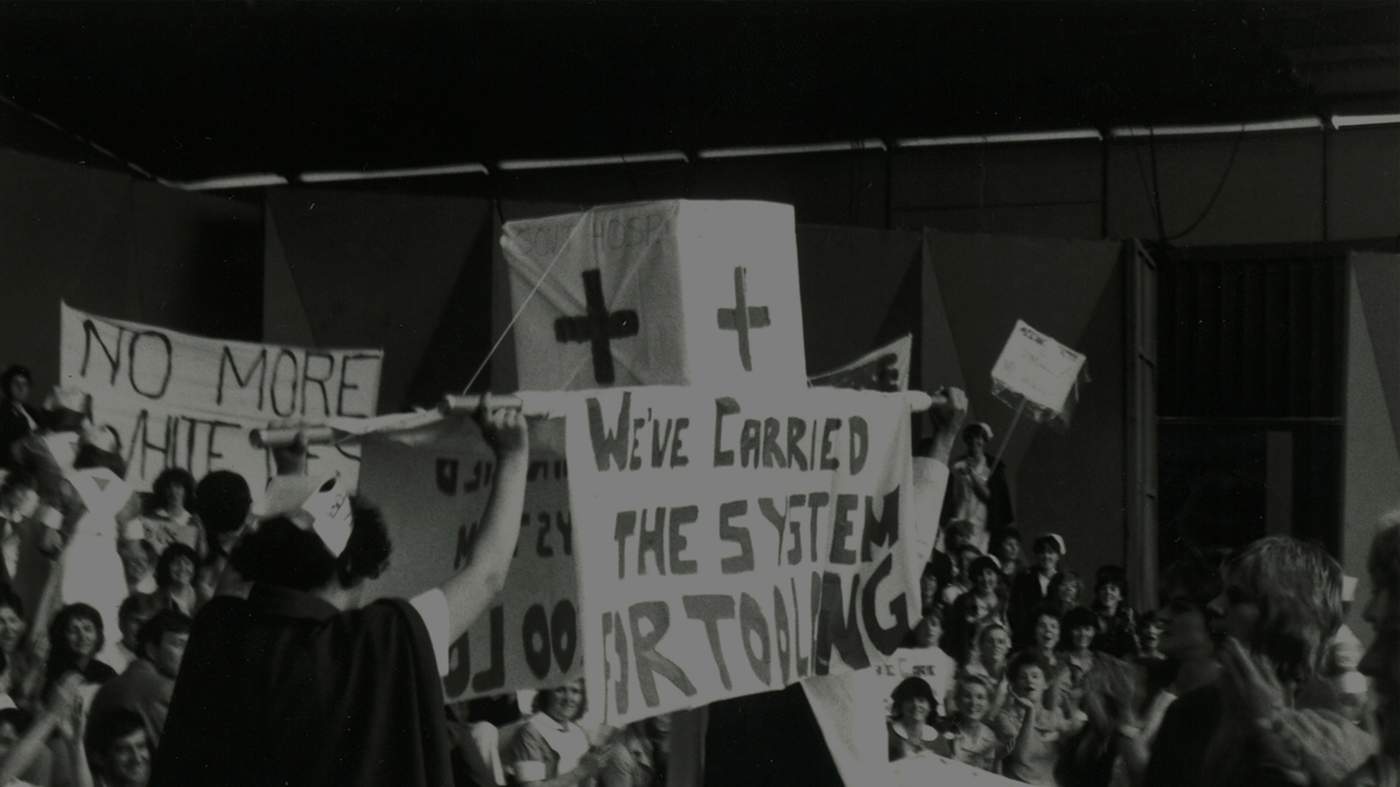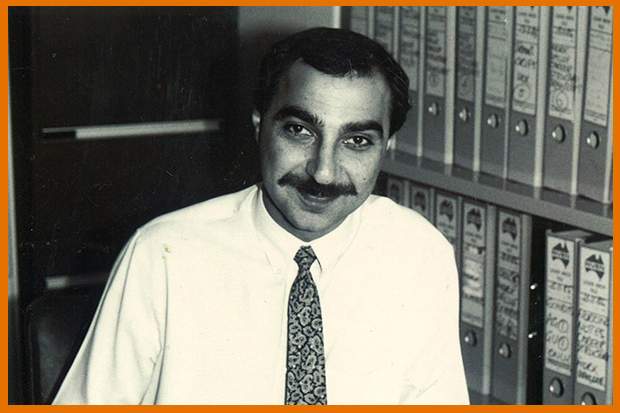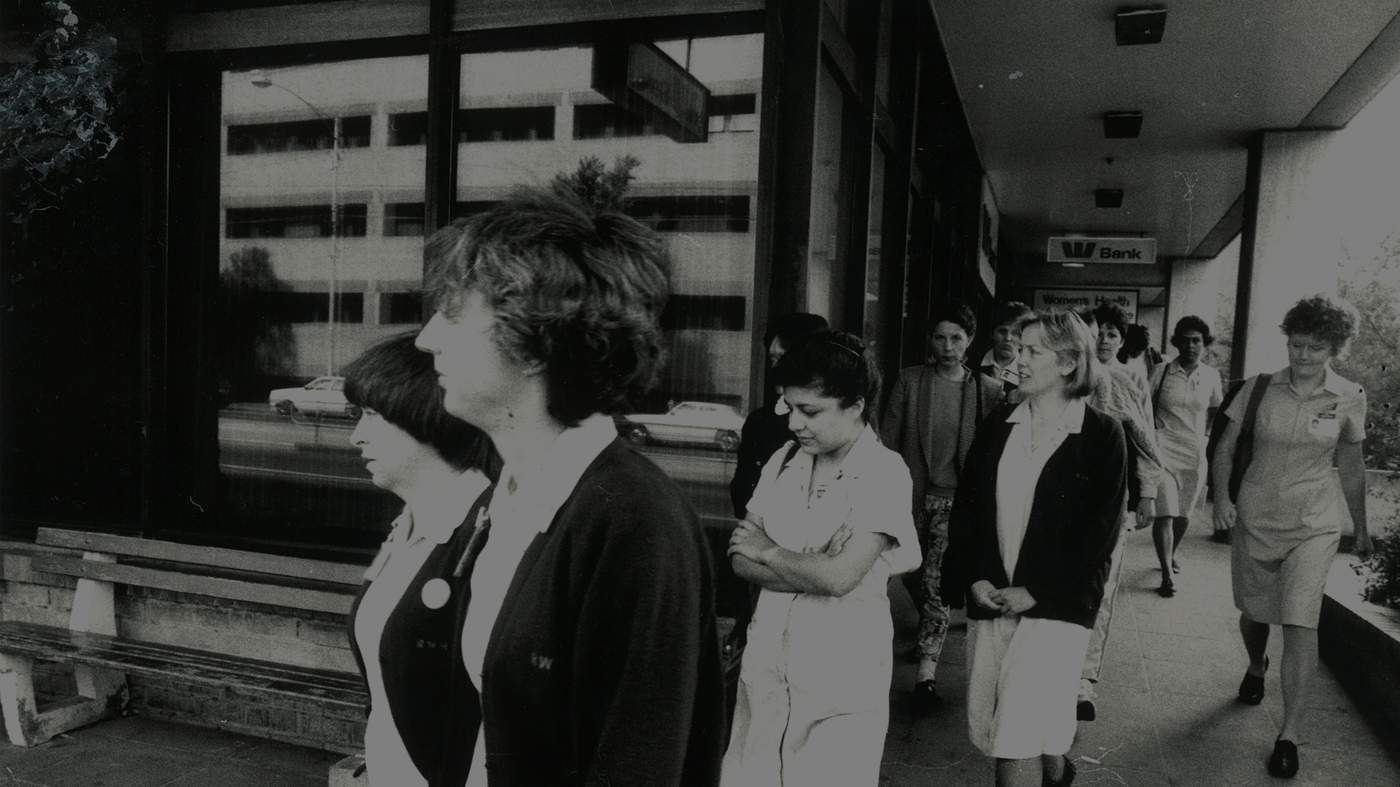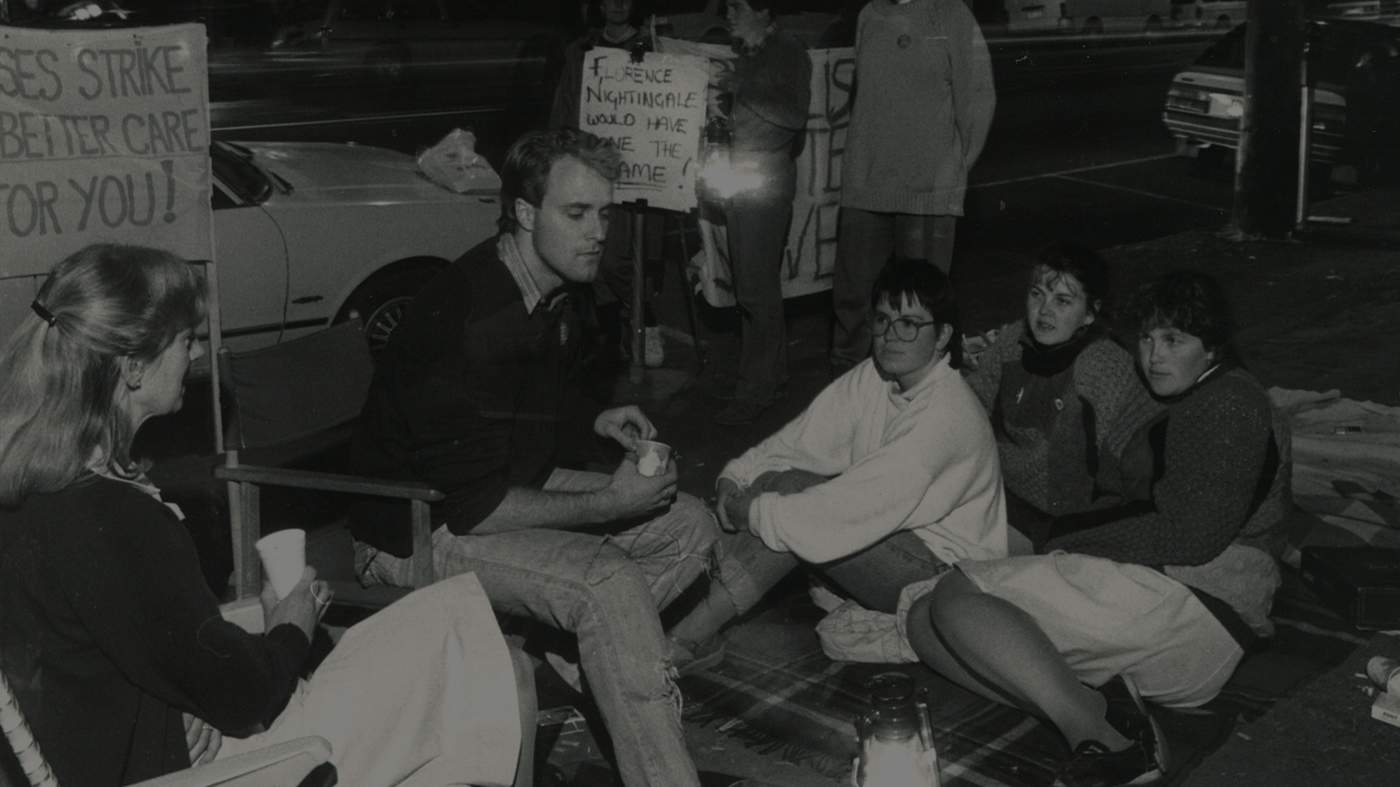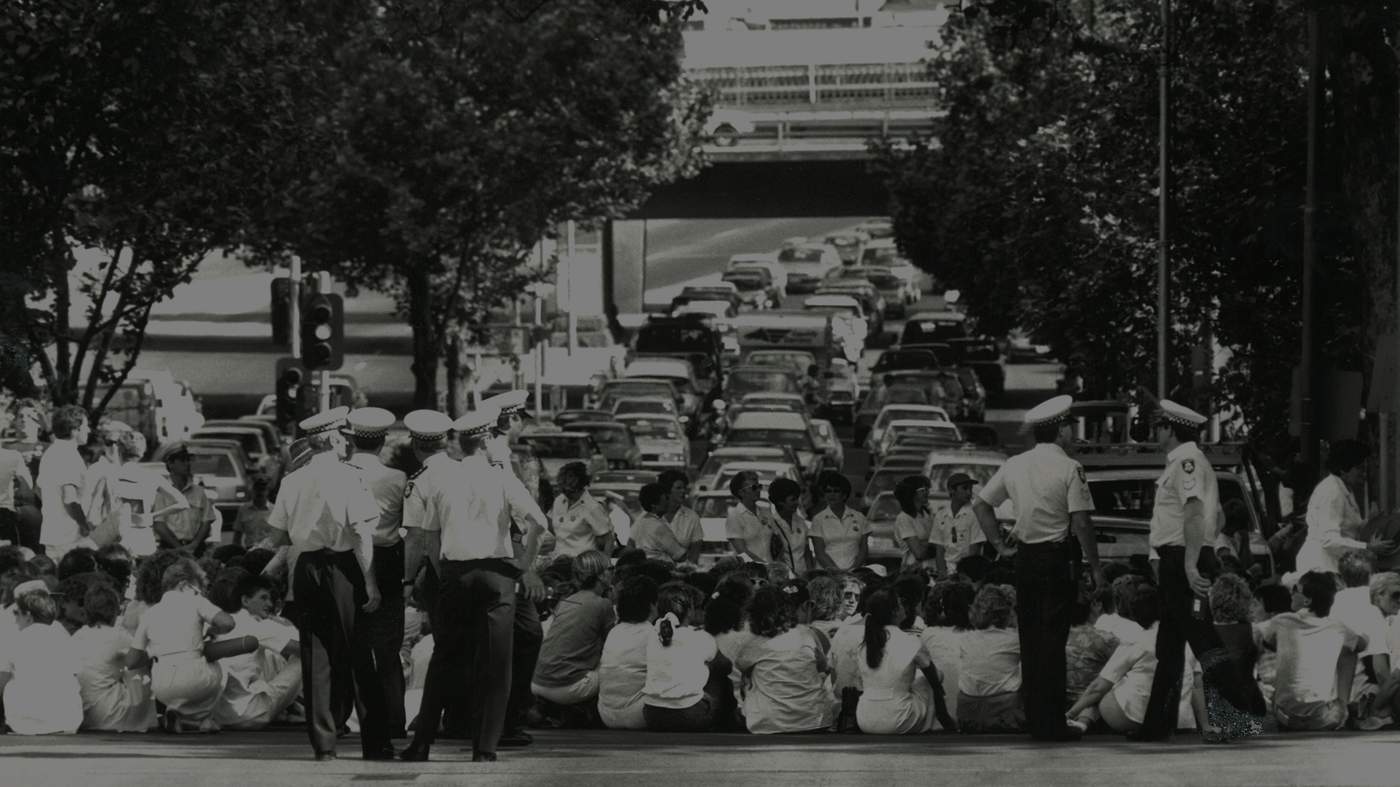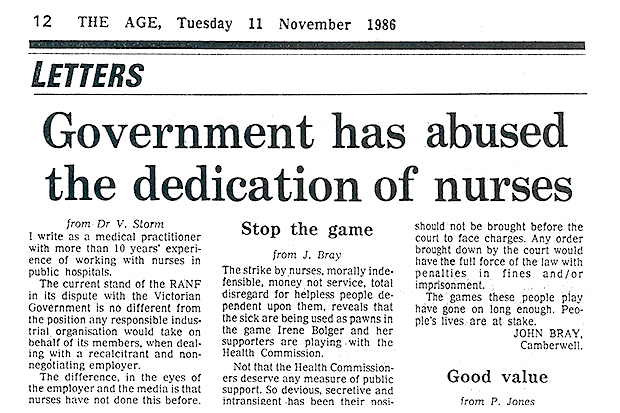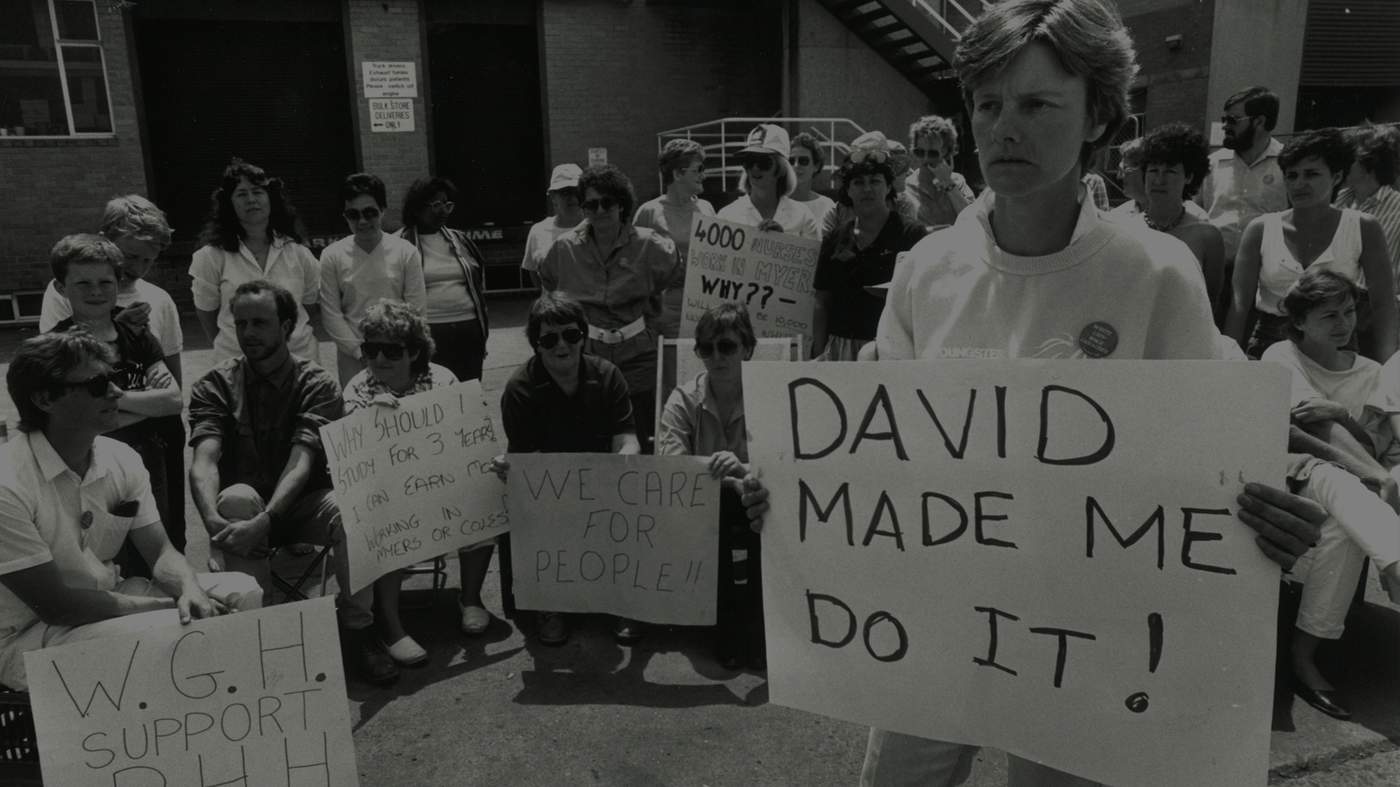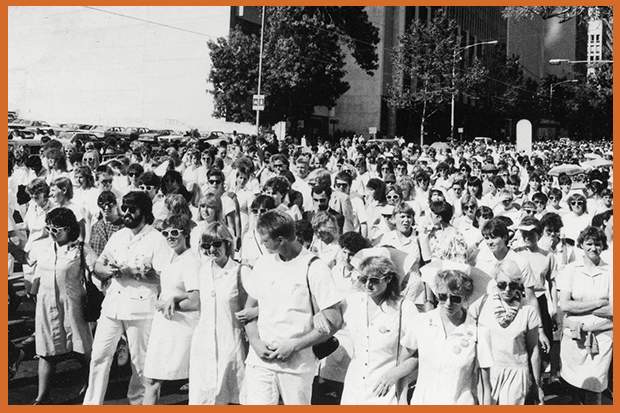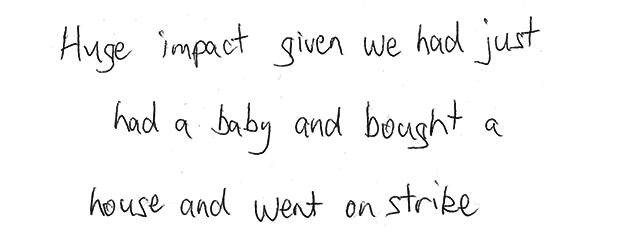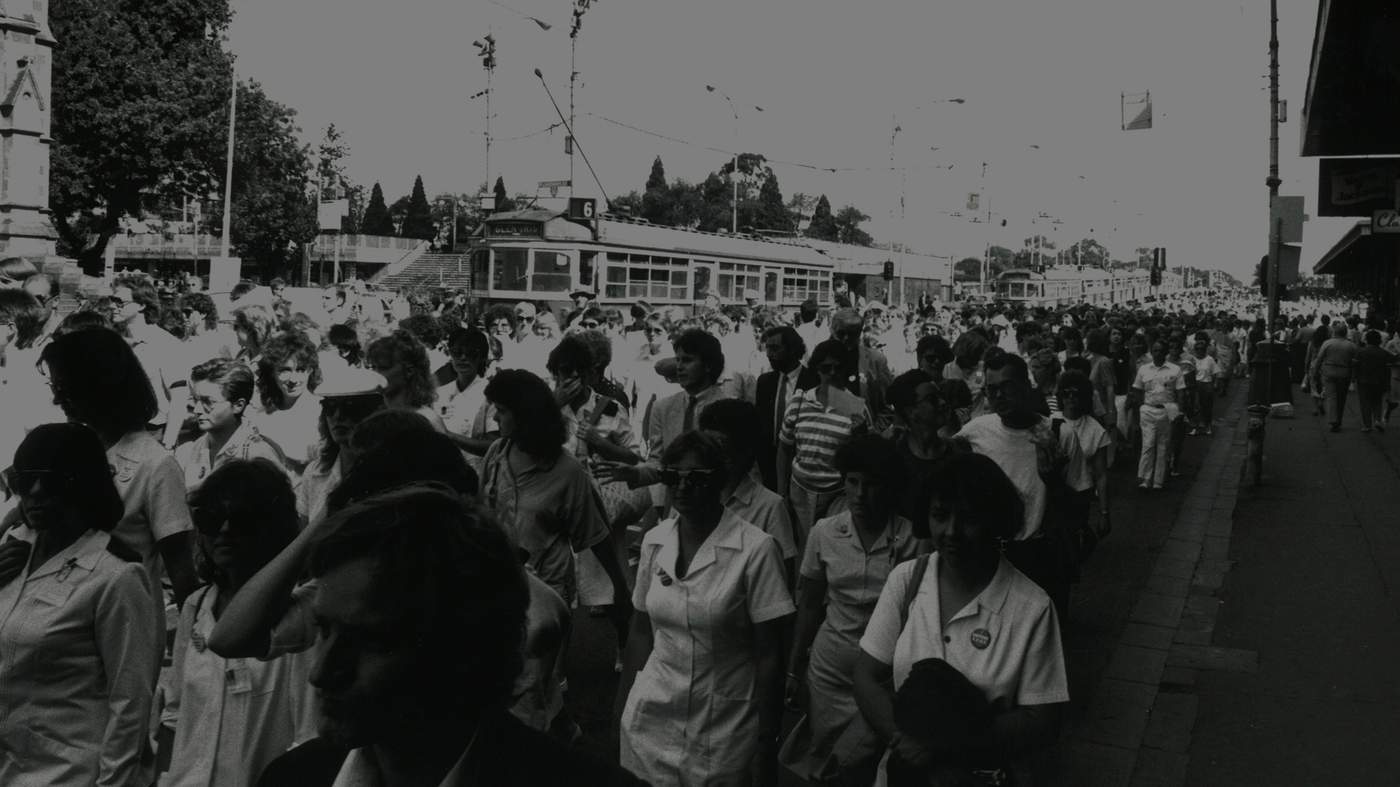On 30 October at a stop work meeting held at the Melbourne Sports & Entertainment Centre, members voted to strike from the following day.
A skeleton staff of one registered nurse and one enrolled nurse or student nurse per ward would remain, together with safe staffing levels in critical care wards such as intensive care and emergency.
But for some RANF members the action did not go far enough. A secret ballot of nurses and midwives at Footscray's Western General Hospital was held. They voted to walk out of all but critical care wards.
The decision to walk out of hospitals was huge for a profession which prides itself on putting patient care first. The action reflected nurses' and midwives' level of anger at the Victorian Government and their collective despair.
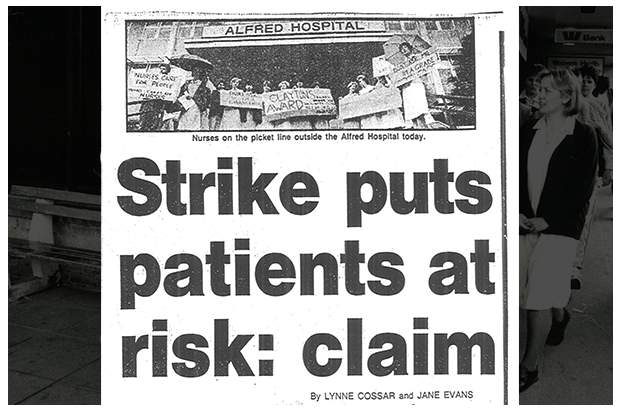
Melbourne Herald , 31 October 1986
On 5 November at the Western General Hospital nursing supervisor and RANF Job Rep Isabell Collins, together with Irene Bolger, led the first of a wave of hospital walk outs .
‘The nurses in this hospital have done a very brave thing today. This is something that has to be done to win this – and we have to win this because if we don’t win this, nursing will be destroyed in this state...’
Ms Collins broke down in tears as she greeted nurses outside. Forty five of the hospital’s 500 nurses were left to care for patients in critical care wards.
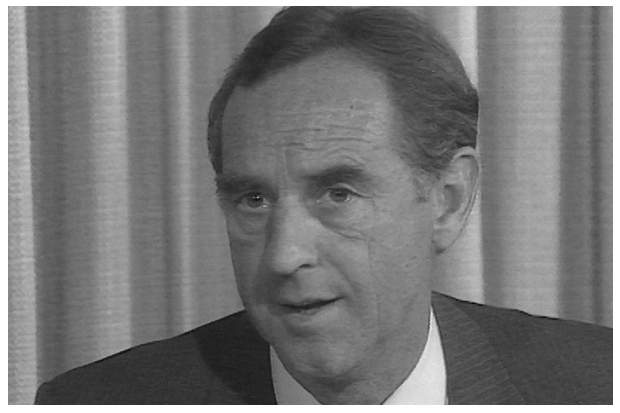
Former Premier of Victoria John Cain
Premier John Cain threatened to invoke the Essential Services Act to force nurses back to work or face arrest. On 6 November the Industrial Relations Commission handed down a return to work order. Premier Cain released a direct-to-camera televised appeal to nurses: return to work and the negotiating table, and ‘give a little’. The nurses’ response? On 10 November, nurses at two of Melbourne’s largest hospitals - Royal Melbourne and Prince Henry’s - walked off the job, along with nurses and midwives at nine other hospitals.
'I’m now appealing for nurses to think again about their action. I urge nurses to meet their obligations and put patients first.
Stay at work and have the disputed claims sorted out through arbitration– that is the proper and long-accepted process for resolving industrial disputes. Now it is time for nurses to give a little.'
On 17 November 1986 – day 18 of the strike - Fairfield Hospital became the 37th hospital to walk out.
Emotional scenes of nurses walking out of hospitals in metropolitan, regional and country Victoria screened on television news for weeks, providing powerful images in the public relations war with the government. In an interview conducted with ANMF (Victorian Branch) in 2016, Ms Bolger said the staggering of the walk-outs was the union's strategy to keep the strike in the public eye.
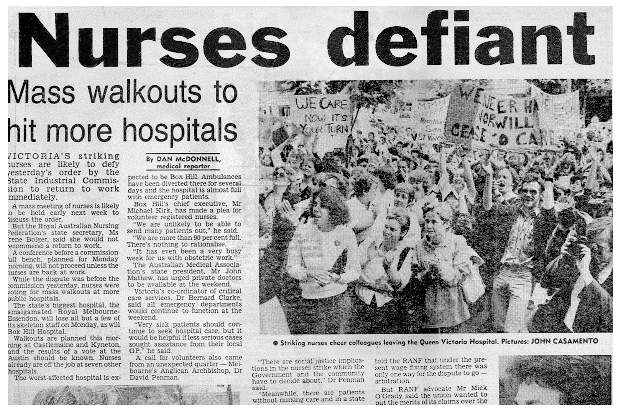
The Sun, 8 November 1986. Nurses defy Industrial Relations Commission order to return to work
But not all nurses walked out, or stayed out. Some disagreed with the action and remained on the wards. Others returned to work as the strike progressed and the impact of not being paid began to take its toll.
With nurses out on strike around Victoria, 24-hour picket lines were established, keeping the strike visible to the community and limiting delivery of supplies like non-essential food and linen.
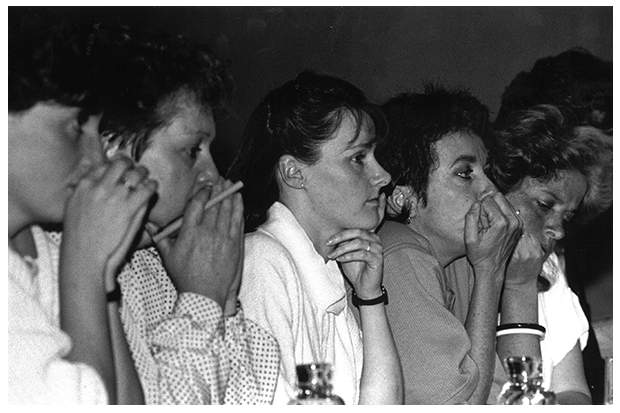
RANF strike meeting including Lisa Fitzpatrick (then Job Rep at Prince Henry's Hospital), Therese Jenkins (former Victorian Branch president) , Irene Bolger and former federal Secretary Jill Kennedy
RANF Job Reps attended daily councils of war at the union’s headquarters and bulletins were taken to picket lines and sent to nurses’ homes.
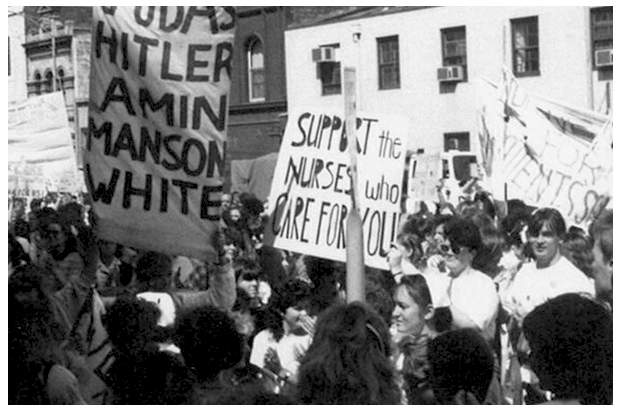
Nurses and midwives gather on mass
Regular mass meetings attracted thousands of nurses, with members making decisions every step of the way. Other unions provided support to the nurses and midwives on the picket lines – donating essentials like toilets and telephone lines; the meatworkers’ union donated meat for picket line barbeques. Unionists collected money for the nurses’ strike fund, administered by RANF.
The Industrial Relations Commission refused to arbitrate the dispute while the nurses remained on strike, Health Minister David White refused to negotiate outside of the commission, while the nurses refused to return to work until the government negotiated their claims. The dispute was deadlocked.
The government’s next move was to bring in nurses from England and Ireland to replace the striking nurses.
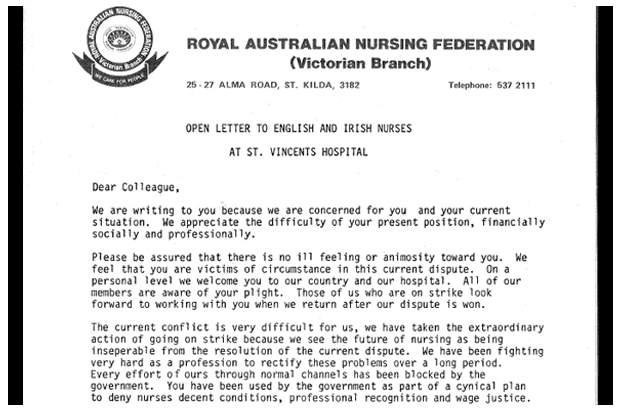
RANF member's letter to English and Irish nurses brought in by the government
On 30 November, at the Royal Melbourne Hospital picket line, the dispute turned ugly with police dragging nurses along the ground, as they broke the picket line to allow trucks carrying fresh linen to go through.
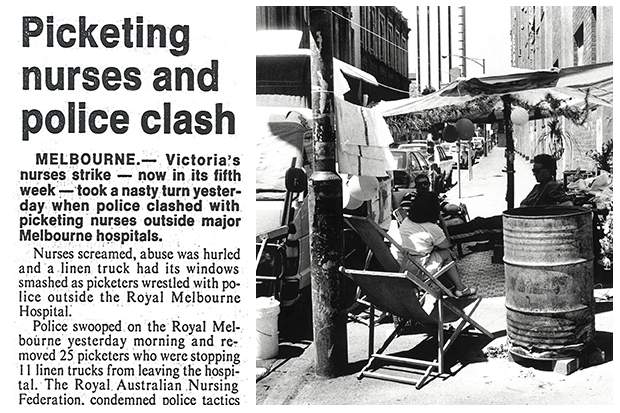
Sunday Mail, 30 November 1986
On 8 December nurses had been on strike without pay for 39 days. They were exhausted. But they felt they had to win and voted to escalate the dispute by walking out of critical care wards. Health Minister David White’s initial response was to threaten replacing the registered nurses - who were mostly RANF members - with state enrolled nurses - but he backed down. The ACTU and RANF put forward a joint package for the government’s consideration.
Nurses again gathered in their thousands at the Sports & Entertainment Centre on 19 December to consider a $30 million package offer from the government, providing wage rises, the return of qualifications allowances and a new career structure.
Irene Bolger advised making a ‘strategic withdrawal’ saying members could go back on strike if the government did not honour its promises.
Nurses voted to return to work on 20 December 1986.
In January 1987 the Industrial Relations Commission issued the new agreement. John Kotsifas, RANF industrial officer, says the union went back to the Commission many times in ensuing years to fight – and win - cases about the career structure.
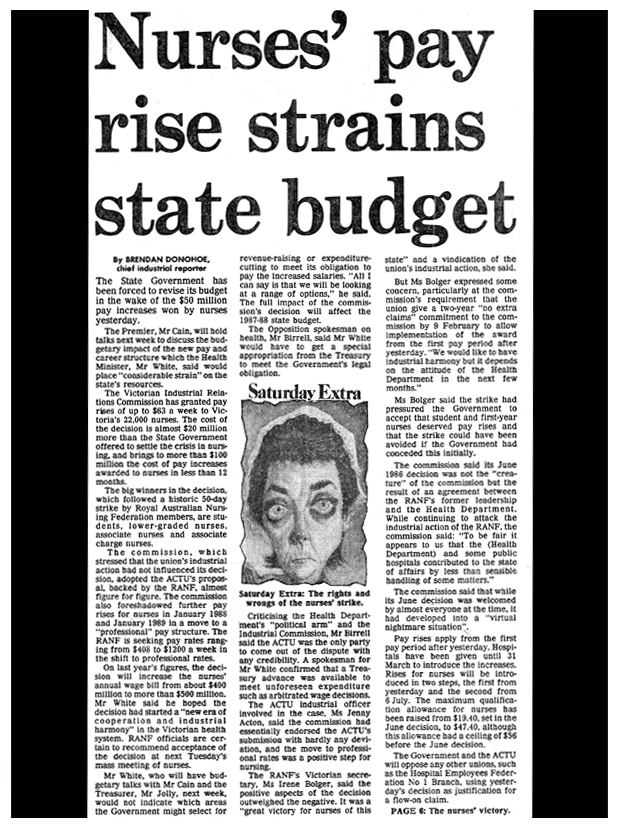
Articles from The Age , 24 January 1987: 'Decision recognises changes', 'New salaries for nurses on the way', 'Nurses' pay rise strains state budget'
Within hospitals, the strike also had lasting reverberations. Back at work, says former Job Rep and nursing supervisor at Western General, Isabell Collins, nurses were coming to her office ‘collapsing emotionally’ with something akin to post-traumatic stress disorder.
Some experienced retribution from management. But there was also a great pride in what the nurses had achieved and solid friendships forged on the picket lines.
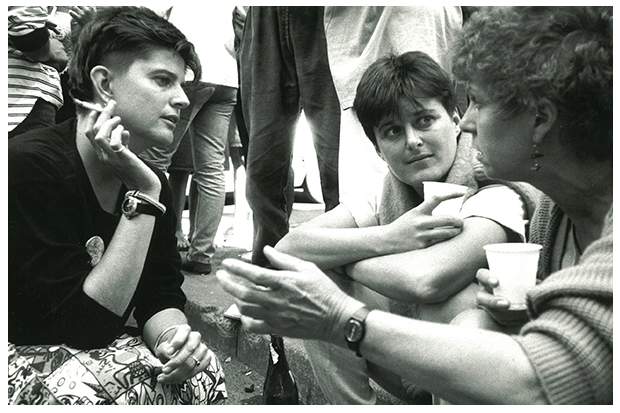
Nurses including Kate Welsman (left) on the St Vincent's Hospital picket line
The perception of nurses and midwives as handmaidens had been cast aside.
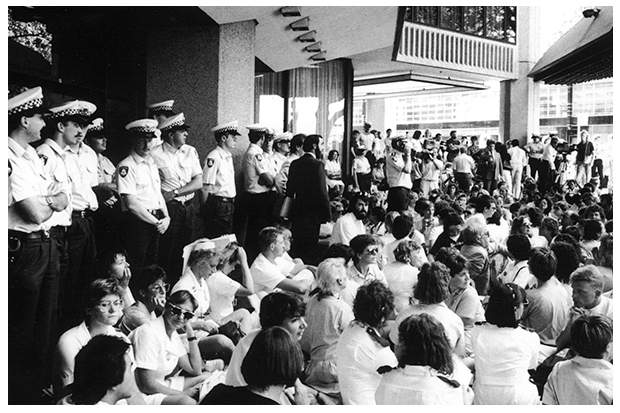
Nurses rally outside office of Health Minister David White

